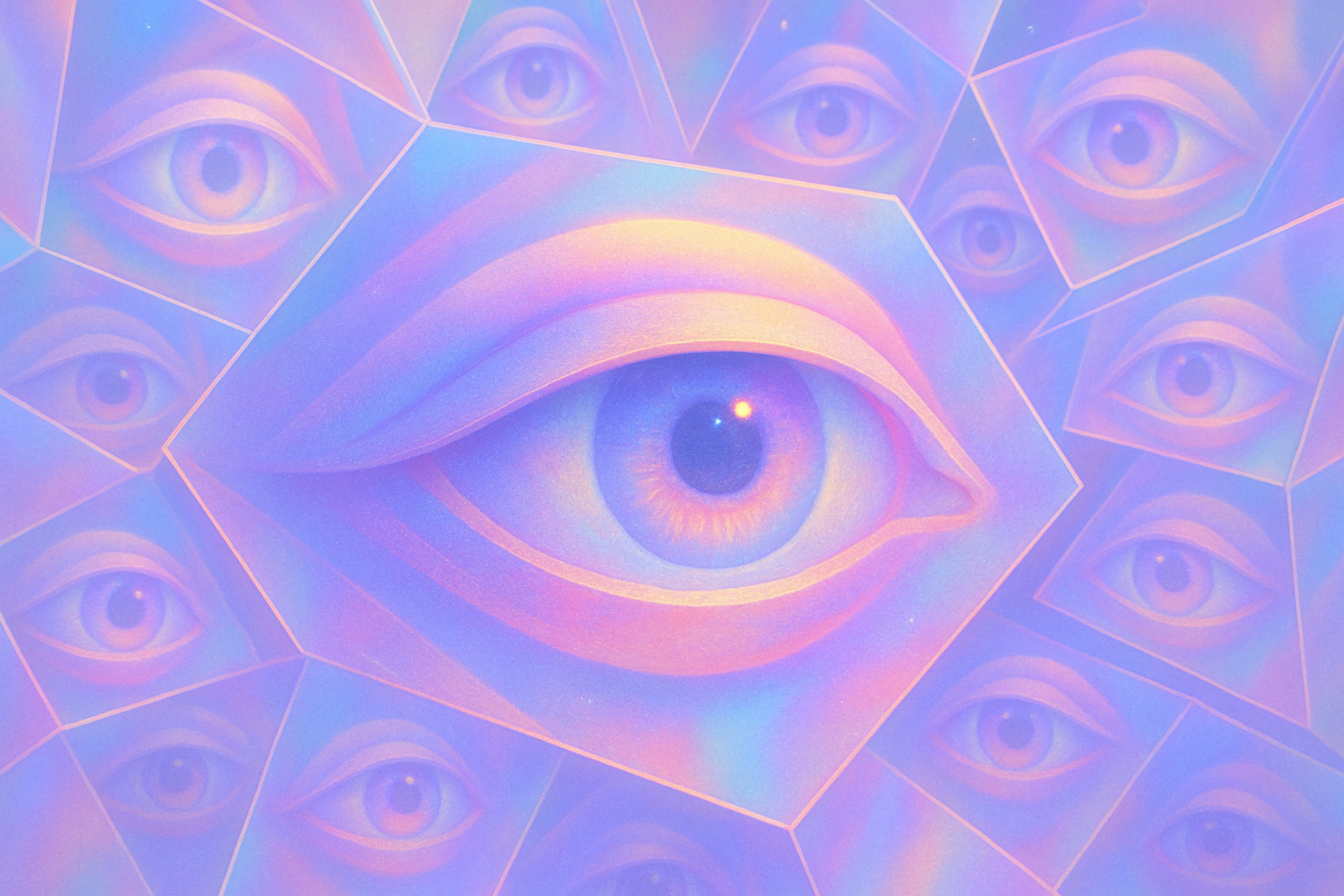From Creator to Curator: How AI Is Redefining the Creative Gaze
by Henry Daubrez, formerly Partner @ DEPT®
For most of my creative life, I’ve worked from the inside out. The work came from my hands, my thoughts, my vision: I was the engine, the filter, and the critic and I would pour myself into a concept, shape it, defend it, and often stick with it far longer than I should have. That’s the pattern many of us fall into. We grow too close to the work to truly see it.
But something changed when I began working deeply with generative AI. It didn’t just speed up production or widen my toolkit. It altered my relationship to the creative process itself. It shifted how I evaluate ideas, how I let go of them, and how I choose which ones are worth pursuing. What began as a tool became a mirror, showing me the difference between making and perceiving.
AI didn’t just change what I created. It changed how I look at what I create, and in that shift, I moved from being a creator to something else entirely: a curator of creative potential.
Transforming Ego Blindness
There’s a kind of blindness that comes from working too closely with something. The longer we spend on a design, a scene, a phrase, the more likely we are to confuse effort with quality. Insecurity, pride, and fatigue all play a role. We convince ourselves the idea is solid, even when something in the back of our mind is whispering otherwise.
This is where AI introduces something incredibly valuable: distance.
When removed from our own ego, the shame of having to let go of an idea we have been working on for a long time, or towards a deadline and instantly presented with some original concepts, we’re actively engaging a different part of our brain, a lot closer to pure emotional reactions, hitting closer to our true sense of taste and enabling us to easily sort out if we really like what we’re looking at.
With generative tools, we’re no longer dealing with just one outcome. We’re faced with five. Or fifty. Or five hundred. That volume of results forces a different posture. It invites us to compare, not just build. To filter, rather than protect. To ask, what actually works? instead of what have I already invested in?
That’s the real creative shift.
Multiplying Pages
In the past, creativity felt like starting on a single sketchbook page and trying to get everything right in one pass. You’d build, erase, rework, and get attached, even when the idea wasn’t fully there. Now, with AI, it’s like flipping through a dozen sketchbook pages already filled with rough ideas, each pointing in a different direction. Some are messy. Some are surprisingly on point. Your job becomes one of critical selection and deciding which idea to pursue more deeply.
This multiplicity changes our relationship to failure because if one result is weak, you simply move on…and this time you don’t feel defeated or personally attacked because the emotional weight is lighter. It still remains very personal but somehow reaches out to a different part of your own identity. Less invasive, less aggressive. Oddly, that freedom often leads to better choices.
AI doesn’t make you smarter. But it does expose you to more. And seeing more, rapidly and repeatedly, sharpens your creative judgment in ways that traditional processes rarely allow.
This same principle guides how I approach my AI-assisted films like Electric Pink, created for Google I/O, and Kitsune, a personal exploration of memory and transformation. In each case, I used generative tools during pre-production to rapidly generate variations of key scenes, visual language, or tone. Instead of relying on abstract storyboards or instinct alone, I could see the differences in real time, like alternate timelines playing out visually in front of me. I wasn’t just designing; I was choosing. This made the entire pre-production phase feel more like a live dialogue with the material and that early visibility helped me avoid weeks of second-guessing later. It actively created room for stronger storytelling and clearer decisions.
A New Kind of Objectivity
When I use AI to prototype storyboards, film sequences, or interactive concepts, I’m not outsourcing my creativity. I’m exercising it more freely. I generate. I observe. I respond, but because I’m seeing the outputs with some degree of separation, I’m able to ask better questions.
Does this feel emotionally honest?
Is this consistent with the narrative arc?
Would I care about this if it wasn’t mine?
These are hard questions to ask when you’ve spent weeks building something from scratch. But they’re far easier to ask when you’re looking at a wave of options, each with its own possibility and flaw. The act of curation becomes central, not just a last step, but a core skill, and with it comes a kind of clarity that is often missing when we’re buried deep in the act of making.
Moving from creator to curator diffuses the treacherous bomb of our own feelings and insecurities.
For example, I’ve been working with Arcus Biosciences, a biotech company active in cancer treatment, on a long-term portrait project involving patients, survivors, caretakers, and families. These are deeply personal, emotionally rich collaborations. I meet each person, listen to their story, and slowly build a visual portrait that resonates with their inner world. AI allows me to explore multiple stylistic directions; some surreal, some raw, some symbolic, and bring a multidimensional lens to each human experience. Instead of guessing the right tone or locking into a single concept, I’m able to present options that we refine together. This process has shifted my role from sole creator to intentional curator, holding space for multiple truths and letting the subject guide the final creative shape.
Speed as a Filter, Not a Shortcut
One of the criticisms often leveled at AI is that it encourages laziness. That it makes it too easy, too fast. But I’d argue the opposite. Speed, when used well, becomes a filter for bad ideas.
In the past, we could spend days or weeks pursuing a direction that ultimately didn’t hold up. Now, we can test that same direction in hours. We can see early signs of weakness, misalignment, or missed opportunity. The faster we iterate, the faster we learn. The faster we learn, the more intentional our decisions become.
This doesn’t mean we rush. It means we refine more deliberately, it means we waste less time defending what was never working to begin with, and that alone might be one of the most powerful shifts AI has introduced to my own creative process.
The main issue is, when living in a world where the only gods are “proof of work” and “technical mastery”, your sense of taste and your vision augmented by the machine are easily turned into a joke. If you didn’t sweat for it, it has no value…one of the greatest lies of our generation.
Teach a monkey how to paint and let him hone a piece for six months, what’s its actual value?
Ego Displacement
There’s a strange but liberating truth in working with generative tools. They take a little bit of the ego out of the equation.
When a machine helps you generate the starting point, you feel less protective. You’re more open to change. More willing to cut, reshape, discard. You stop seeing the work as an extension of your identity and start seeing it as something separate. Something to be explored, evaluated, and tested.
That’s not a loss. That’s a gain in perspective.
Too often, creative leadership gets bogged down in attachment. We push ideas not because they’re right, but because they’re ours. With AI, we’re reminded that good ideas don’t care where they come from. And once you free yourself from the need to be the sole author, you become a better editor, collaborator, and visionary.
The Human Layer Remains Essential
Of course, AI is not infallible. It doesn’t understand nuance the way a human does. It can’t read a room, anticipate culture shifts, or navigate emotional complexity without guidance. It needs a human at the center, not just to direct, but to interpret.
This is where the role of the curator becomes so important. We are not passive observers. We’re the ones who decide what matters. What to pursue. What to amplify. What to let go.
Curation is not lesser than creation. In this new landscape, it may actually be the more difficult, more valuable act, it demands clarity, taste, and restraint.
It asks you to see not just what could be made, but what should be made.
Last but not least, none of this can exist if you don’t consciously decide to show up. Honestly. Whole. Showing yourself as you truly are, your culture, your identity, your unbiased opinions, but also caring enough to push these ideas to their full potential.
You can be given a whole set of great ingredients and see a quick snack…or a three course luxury meal. This choice is yours.
Closing Thought: Seeing Differently
The promise of AI is not infinite productivity. It is a renewed perspective.
It gives us the space to step back from our work and ask deeper questions. It makes room for iteration without exhaustion. It helps us separate our instincts from our insecurities, and in doing so, it brings us closer to the heart of what creativity is meant to be: not an act of self-assertion, but an ongoing conversation between vision, possibility, and judgment.
As we move forward into this new era of creative tools, the most powerful transformation may not be what AI lets us build.
It may be what it teaches us to see.
Henry Daubrez, formerly DEPT®


